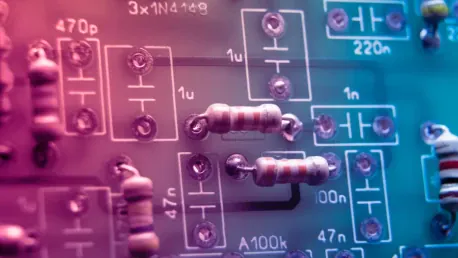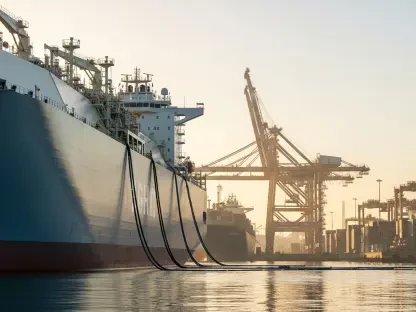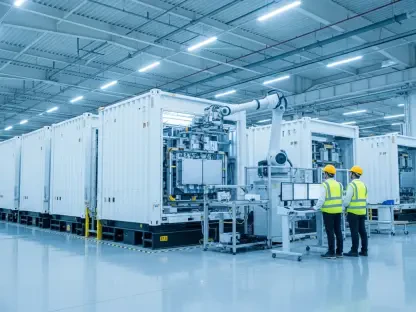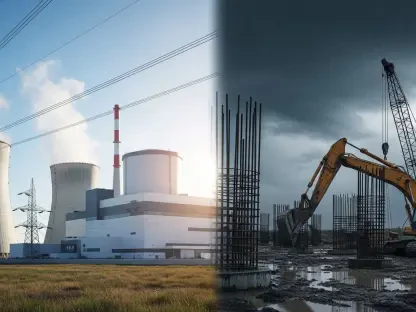During a time when the energy sector is increasingly focused on minimizing emissions and maximizing efficiency, Baker Hughes has introduced three groundbreaking electrification technologies designed to meet these contemporary challenges. Unveiled at the company’s 25th Annual Meeting in Florence, Italy, these innovations are set to transform onshore and offshore operations across both traditional oil and gas and emerging energy sectors.
Industry-First Hummingbird™ All-Electric Land Cementing Unit
The energy industry has long grappled with the environmental and operational challenges posed by traditional diesel-powered cementing units. In an unprecedented move, Baker Hughes has launched the Hummingbird™ all-electric land cementing unit, signaling a significant shift away from diesel engines. This innovative technology either connects to the electrical grid or employs battery-powered motors, offering a revolutionary alternative that drastically reduces emissions and noise levels. This not only contributes to cleaner operations but also provides notable cost savings in terms of maintenance and improved reliability.
Designed to handle high-pressure cementing operations with greater efficiency, the Hummingbird™ unit is poised to redefine industry standards. By leveraging electric power, it eliminates the dependency on diesel, thereby slashing carbon emissions and enhancing operational safety. Additionally, the reduced noise levels create a quieter working environment, which is particularly valuable in urban or environmentally sensitive areas. Maintenance requirements are also minimized thanks to the electric motors, which have fewer moving parts compared to traditional diesel engines.
This innovation ensures continuous and reliable cementing operations, which are critical to the success of onshore drilling projects. The Hummingbird™ unit further strengthens Baker Hughes’ commitment to sustainable energy solutions and reflects the industry’s broader trend toward electrification. As the first of its kind, this all-electric cementing unit sets the stage for future advancements in land-based drilling technologies.
SureCONTROL™ Plus Interval Control Valves and All-Electric Subsea Production System
SureCONTROL™ Plus Interval Control Valves Revolutionizing Efficiency
Adding to its suite of electrification technologies, Baker Hughes introduced the SureCONTROL™ Plus interval control valves, which offer significant improvements in efficiency and control. These valves transition from multiple hydraulic lines to a single electrical line, a change that simplifies the installation process, significantly cuts down rig time, and boosts production efficiency. The electrical remote operations enable precise zonal control for both subsea and dry tree wells, enhancing the overall management of oil and gas extraction processes.
Beyond simplifying installations, the SureCONTROL™ Plus valves bring real-time data monitoring to the forefront of oil and gas operations. With continuous monitoring, these valves allow for proactive maintenance of downhole tools, reducing the likelihood of unexpected failures and downtime. This capability ensures that operators can make informed decisions quickly, leading to better resource management and optimization of production processes.
Moreover, the single electrical line significantly reduces the complexity associated with traditional hydraulic systems, cutting down on both installation time and associated costs. This simplification extends to maintenance as well, with fewer components requiring oversight and repair. The SureCONTROL™ Plus valves thus represent a leap forward in operational efficiency, allowing for smoother, more reliable production workflows.
All-Electric Subsea Production System
In a similar vein, Baker Hughes has also unveiled an all-electric subsea production system, which is the first fully electric solution extending from the surface to the seabed. This modular system is designed to retrofit existing electro-hydraulic trees, facilitating a seamless transition to full electrification. The system enhances production control, boosts reliability, and further reduces carbon emissions.
The elimination of hydraulics from subsea installations simplifies the overall process and reduces costs and time associated with installation and maintenance. This shift is especially advantageous for both shallow and deep-water developments, including complex projects such as subsea carbon capture and long offset tieback applications. By doing away with hydraulic components, Baker Hughes’ all-electric subsea production system minimizes the potential for mechanical failures and environmental hazards posed by hydraulic fluid leaks.
The modular nature of the system allows for easy upgrades and adjustments, ensuring that it can adapt to the evolving needs of offshore operations. By harnessing electric control, the system provides more precise and responsive management of underwater equipment, thereby improving the efficiency and safety of subsea production activities. This technological advancement underscores Baker Hughes’ dedication to pioneering sustainable and efficient energy solutions for the future.
Towards a Greener Future in Energy Production
Commitment to Sustainable Energy Solutions
Overall, the introduction of the Hummingbird™, SureCONTROL™ Plus, and the all-electric subsea production system marks a significant milestone in the energy sector’s move towards electrification. By reducing reliance on diesel and hydraulic systems, Baker Hughes is not only improving operational efficiency and reliability but also significantly cutting down carbon emissions. These technologies are designed to produce hydrocarbons with a minimal environmental footprint, making them pivotal in the industry’s pursuit of greener energy solutions.
The company’s commitment to these advancements reflects a broader industry trend that prioritizes environmental responsibility without compromising on performance or safety. These innovations also highlight the potential for electrification to revolutionize not only the traditional oil and gas sectors but also emerging fields such as offshore wind and subsea carbon capture. As these technologies gain traction, they have the potential to set new standards for sustainability and efficiency in energy production.
Future Implications and Industry Impact
In an era when the energy sector is increasingly prioritizing the reduction of emissions and the enhancement of efficiency, Baker Hughes has unveiled three revolutionary electrification technologies aimed at addressing these modern-day challenges. These innovations, which were showcased at the company’s 25th Annual Meeting in Florence, Italy, are poised to revolutionize both onshore and offshore operations. These advancements hold significant potential for not only the conventional oil and gas industry but also for the burgeoning energy sectors that are emerging as the world transitions to cleaner energy solutions. The introduction of these technologies marks a pivotal moment for Baker Hughes, positioning the company at the forefront of sustainable energy solutions. As industries worldwide strive to balance environmental concerns with energy demands, these electrification technologies represent a meaningful step forward. By focusing on efficiency and emission reduction, Baker Hughes continues to demonstrate its commitment to innovation and sustainability within the energy landscape.









